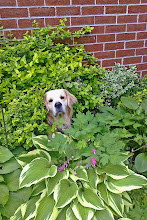As many of you may, or may not know, Oak and I have been in training since he was about 3 months old. We, as a family, have always (for the last 15 years) taken our dogs to the same school for training. I’ve used the same methods, followed the same rules, and came away with a well behaved dog. These methods don’t seem to be consistently working this time. Oak has some commands he will complete automatically, with no thought involved. And other commands he completely ignores. I didn’t want him jumping up and trying to steal his food from my hand before I was able to put the dish down, so from a young age I taught him to wait until I say “alright”. No matter how hungry he is, he sits and waits. One time, I accidently said “Hello” instead of “Alright” (which is our release word) and he looked at me like I was crazy, but he didn’t start eating his food. If I could just figure out the best method to get him to obey the rest of the commands everything would be perfect! So I decided to investigate other methods of training. Maybe they know something new that our trainer didn't know about. What I discovered is that although different trainers may have different methods, they still all follow eight basic rules:
Rule #1:
You are the alpha and you must make sure your dog believes it to be true. This of course is the most important rule and the basis of all other training.
Rule #2:
Training should be fun. A happy and excited dog is more likely to pay attention and learn.
Rule#3
You must first guide the dog through the exercise. It is easier for a dog to learn a command if they understand what you are trying to get them to do.
Rule#4:
A correction is needed if the command is not followed. The correction should not be harsh, but should catch the dog's attention and encourage him to listen.
Rule#5
A reward is needed for following the command. Whether is be food, praise, petting or to play.
Rule#6
Repetition! I have read some books that say you need to repeat a lesson a few thousand times before response becomes conditioned and automatic.
Rule#7
Consistency. You must be consistent with the body language, commands, corrections and even praise that you use.
Rule #8
You need to have a release word to tell your dog he may move.
Any training method you choose should work, if you follow these basic rules.
Subscribe to:
Post Comments (Atom)





.jpg)







No comments:
Post a Comment